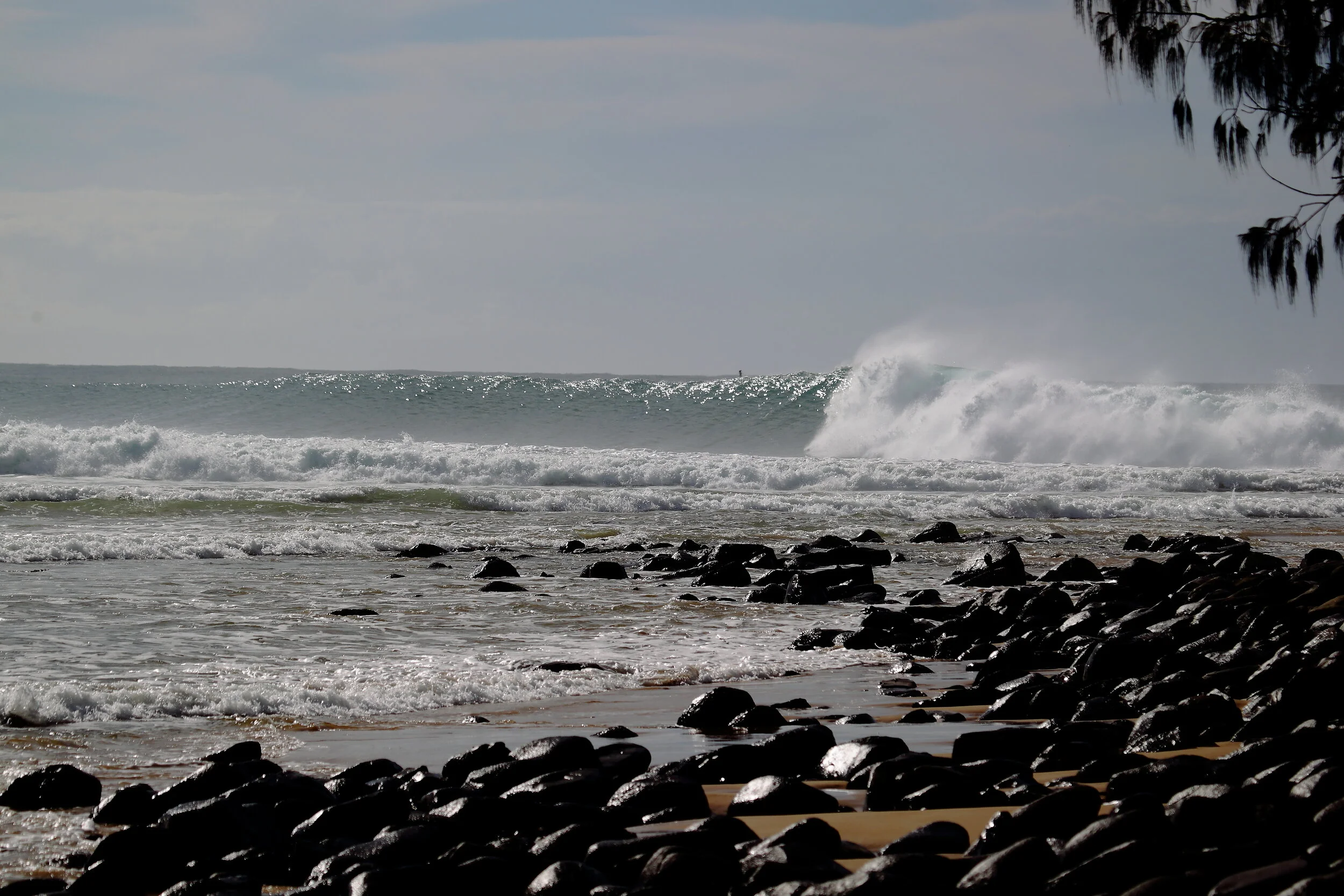
Unlock the Secrets of our Fin Terminology
Depth is how far the fin reaches into the wave from the bottom of the board. Fins with greater depth will improve control and stability throughout manoeuvres.
Base is the length between the leading and trailing edges where the fin meets the board. Base is primarily linked to drive. Fins with an adequate base will offer more drive out of turns.
Tab is the part of the fin that goes in the fin box.
Rake (also known as Sweep) is the distance the fin tip curves away from the trailing edge of the base. The rake affects the turning ability of the board. The less the tip is offset from the base, the more maneuverable the board will be. Greater rake will produce longer and more drawn out turns.
ProGlass fins are cut from layers of solid fiberglass. These fins are stiff and are widely used by professional level surfers because the honesty of the flex is maintained under immense force, and in the most extreme of conditions and situations. ProGlass fins are not only impressive due to their colour and finish, but they also offer additional benefits that ordinary fins do not. Since they are hand laid, they are optimized for minimal flex which increases speed and projection through turns with predictable and reliable outcomes and integrity of performance.
Ultra Lite Xtreme ProCarbon fins are manufactured using an extremely light high density epoxy foam core wrapped in genuine carbon composite laminate for extreme strength. The epoxy foam core is lighter and stronger than PU foam. When you are ready to fly these are the fins that will get you there. They are the lightest strong fins available.
Performance Core fins are manufactured using resin transfer molding technology embodying a lightweight core with an integrated solid fibreglass casing and base for strength. These fins are light and strong featuring a moderate progressive flex pattern from the base to the tip. They are suited to lighter weight and more agile surfers who are unlikely to overpower the fins, helping the surfer to maintain drive and hold through turns. Performance Core fins have a lightweight hexagonal core which reduces the weight and maintains the flex properties. These fins are engineered with a medium flex pattern which is maintained under immense force, and in the most extreme of conditions and situations. The optimized flex provides integrity of performance, which increases speed and projection through turns with predictable outcomes. The hexagonal foam core in these fins reduces the resin content, making the fin lighter while keeping the fin stiff where it counts. This gives these fins a medium flex pattern making them a great all round performer.
TekFlex fins also use resin transfer molding technology but with carbon fiber reinforcing, which produces a light and strong fin with greater response.
Machined Finish has a matt feel and allows the grain of the fibreglass to be evident.
Sanded Finish has a matt feel without the grain of the fibreglass being evident.
Cant of a fin is the outward angle of the fin in relation to the bottom of the board. A fin set up with zero cant (straight up and down) is faster in a straight line, but not very responsive through turns. The more cant the fin has (to a degree) the more responsive through turns. This helps keep drive up when the board is tilted and on rail. Greater cant angle helps generate lift making the board livelier.
0–3° cant angle: a smaller cant angle provides more speed and drive, making for a more controlled ride. This is good for navigating through larger waves.
5–9° cant angle: a greater cant angle allows for more responsive turns, making it good for dynamic surfing styles. This is good for smaller, crisper waves.
FCS two-tab fins usually have zero cant as the angle is built into the box. The original FCS round plugs have zero or 4 degrees of cant angle. The FCS Fusion fin box is available in 0°, 5°, and 9° cant angles. FCSII comes available in four different cant angles: 0 degrees, 3 degrees, 5 degrees and 9 degrees. 0-degree plugs are for centres only (they cannot be used for quad rears). 5-degree plugs are recommended for quad rears. 5-degree and 9-degree plugs are recommended for front fins.
Futures single tab boxes have no cant angle built in, so it is built into the fins instead.
All that being said about the cant angle of the various manufacturer’s fin boxes, it is really determined by the board builder in how the boxes are set into the board. If it has concaves or channels the builder may offset the box to the bottom of the board to achieve a desired result. The only real way of knowing the cant angle on any given board is to fit the fins and measure the angle with the appropriate tool.
Futures fins tab depth: Futures compatible twin fins have 3/4” tabs. Futures compatible thruster fin sets have 3/4” tabs on side fins and 1/2” tabs on the centre fin. Futures compatible quad sets have 3/4” tabs on the front fins and 1/2" tabs on the rear fins.
Foil is the curve applied to the faces of the fin. Fins with a flat inner face create an area of low pressure on the curved outer face which enhances maneuverability.
Screw and plate is the traditional method of holding a fin in place in a sliding finbox. The advantage over click in fin systems is that they are not easily dislodged when bumped and its harder for a thief to easily steal the fin from the board without tools.